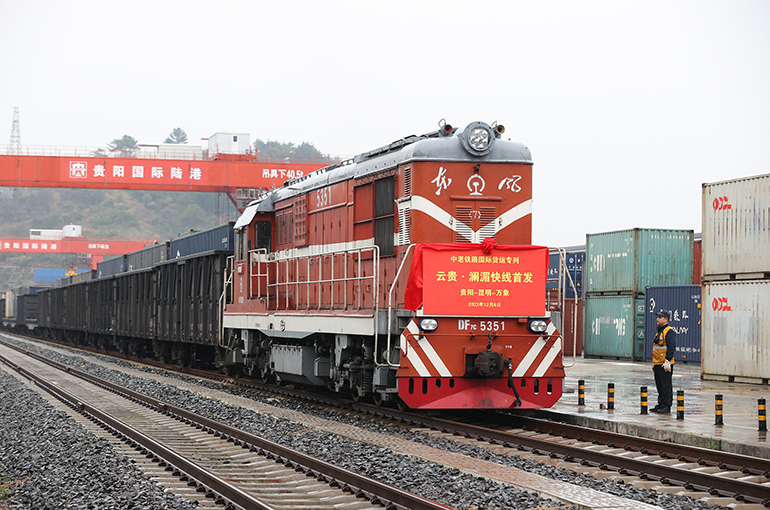 China's Guiyang Aims to Become Transit Hub for Eurasian Trade
China's Guiyang Aims to Become Transit Hub for Eurasian Trade(Yicai) April 28 -- Guiyang, in China's Guizhou province, seeks to become a transit hub for Eurasian trade, opening up to the west and south by creating a land outlet to the sea, following suit with other southwestern cities, including Chengdu, Chongqing, and Kunming.
Guiyang's international dry port should be a "gateway" for a new highland of an open economy in inland Guizhou, according to a new document the provincial government released yesterday. The initiative aims to make it a global trade transit hub and logistics center, targeting the Association of Southeast Asian Nations, Central Asia, and Europe, turning it into an important global logistics hub in Southwest China.
Measures include supporting local government special bond issuance for eligible projects at the international dry port and seeking support from relevant central government special funds. Subsidies will be provided in accordance with the law to various entities involved in the arrival and departure of trains at the port each year.
The Guiyang Comprehensive Bonded Zone will fully subsidize the transportation and handling fees for international trade goods at the dry port, the document showed.
The goal is for Guiyang's international dry port to be deeply integrated into the domestic and international industrial, supply, and value chains by 2035, with an annual container throughput exceeding 100,000 twenty-foot equivalent units.
The port handled a record 8,047 train shipments, amounting to 405,000 tons, in the first quarter of this year, up 68 percent from a year earlier. The container throughput surged 76 percent to a record of 8,553 TEUs.
Guizhou is deep inland, which restricts the development of its open economy and affects its ability to undertake industrial transfers, a challenge many Western Chinese regions face. Chengdu, Chongqing, Xi'an, and Kunming have made significant efforts to expand the China-Europe Railway Express, Central Asia Railway, China-Laos Railway, and China-Vietnam Railway, creating major logistics corridors and international logistics hubs connecting Europe, Central Asia, and ASEAN.
Guiyang's international dry port became operational in 2022 and has since opened routes for the China-Europe through Central Asia and China-Laos new land-sea corridor trains. In addition, seven coastal ports, including Guangzhou Port and Zhanjiang Port, have established dry ports there.
Editor: Martin Kadiev